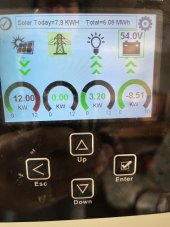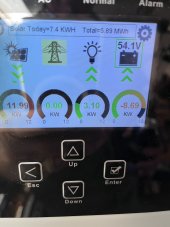robby
Photon Vampire
- Joined
- May 1, 2021
- Messages
- 4,199
I see that your not going to touch the Deye power output claim.It's not for me, I have no use for their products. They don't fit my needs. I didn't start this thread. It was actually started, about the 12k. It was revived because Sol-Ark has done it again, with the 15k.
If you have a problem with customers feeling like they were scammed. You should take it up with Sol-Ark. They are the reason that this thread continues. Maybe next time they will actually do what they say. But that's doubtful, given their track record.
If they have to put out videos explaining why they chose to call it a 15k. They didn't learn anything from the 12k fiasco.
We both know it's the same battery Inverter board it's just that Deye is being deceptive and using 60V in their calculations.
It cannot do 16KW on battery with normal packs. It's also a 12KW Battery Inverter that can possibly do 13.5KW if your batteries are at 53V+.
Sol-Ark is the one being honest!
Last edited:




